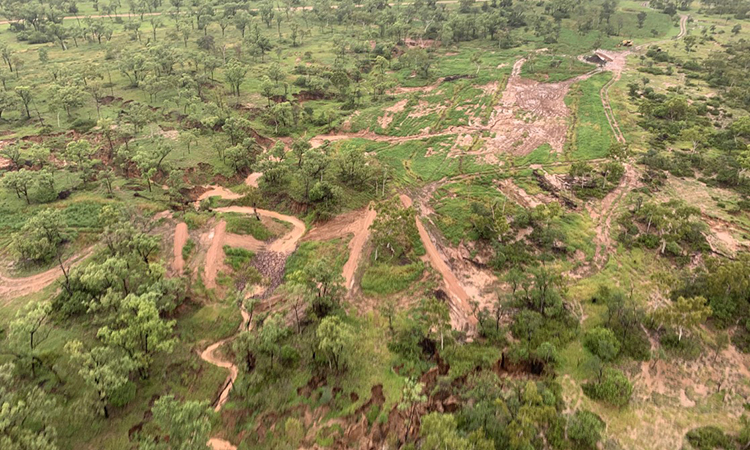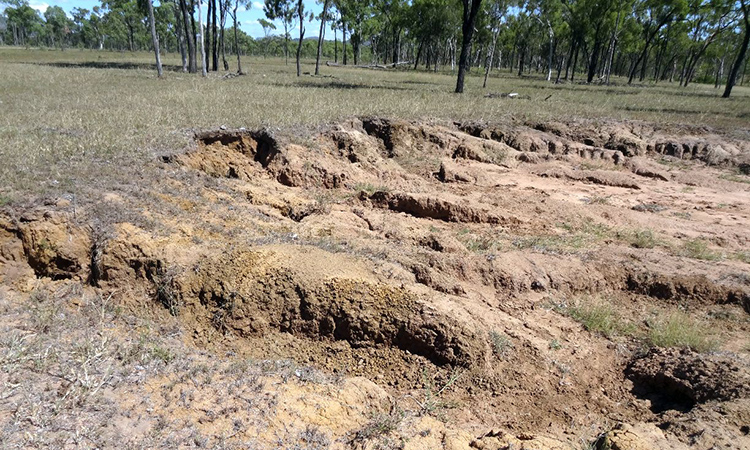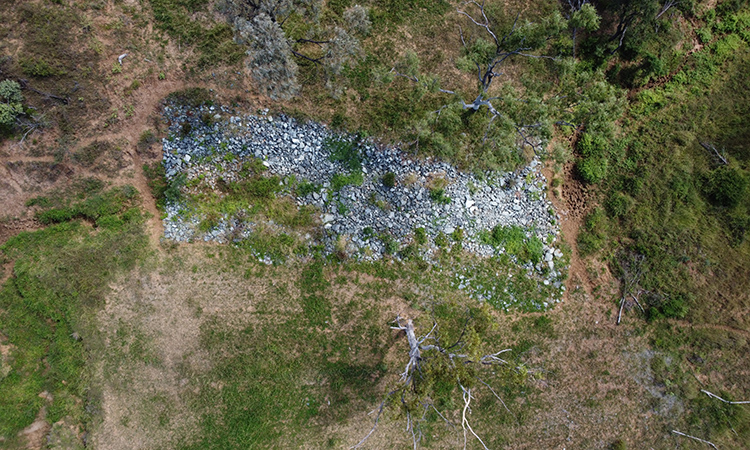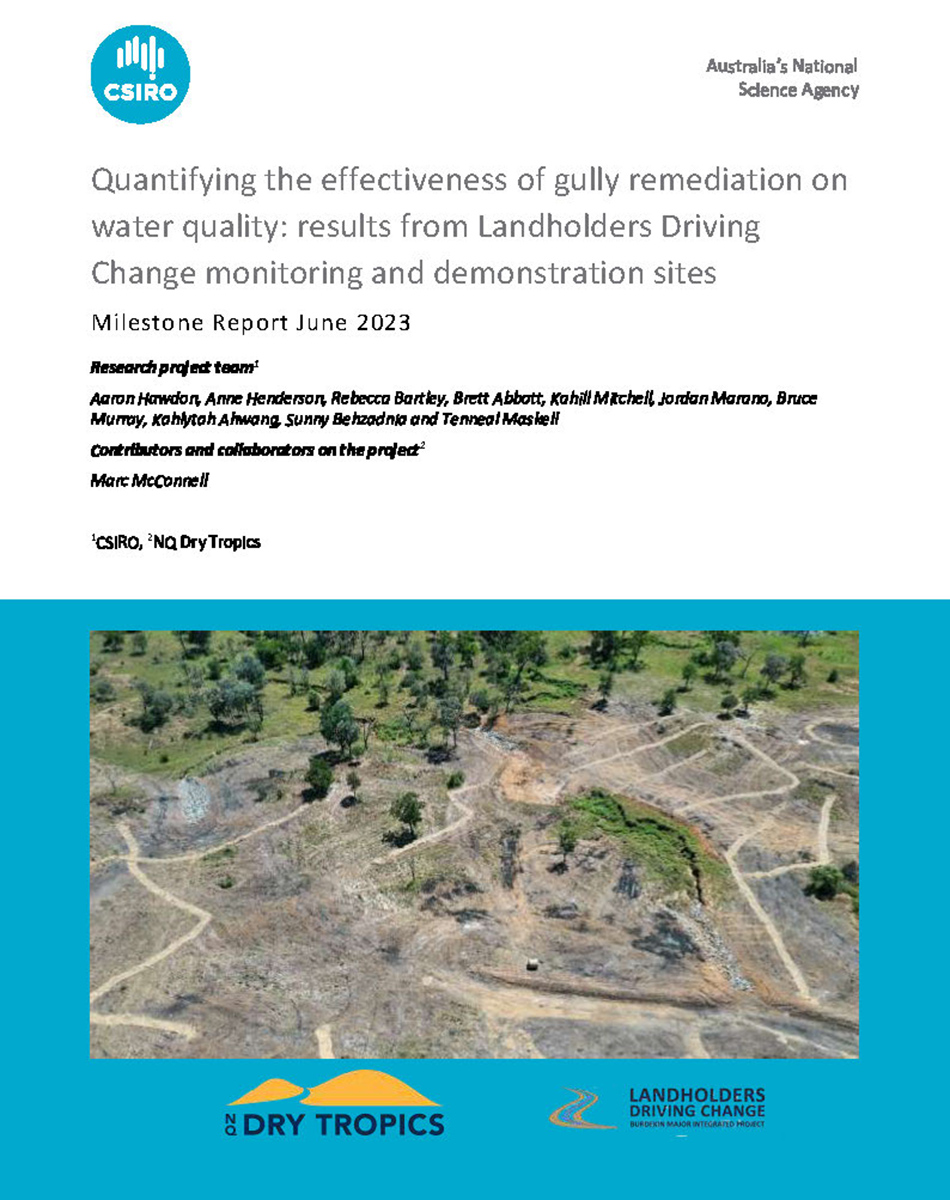Quantifying the effectiveness of gully remediation on water quality
CSIRO produces an annual report to present the monitoring results for control and treatment gully rehabilitation projects on four properties in the BBB catchment area, on behalf of the Landholders Driving Change (LDC) project.
They are: Strathbogie, Mt Wickham, Glen Bowen, and Havilah. Monitoring on Mt Pleasant stopped in 2022. The aim is to evaluate the performance of the rehabilitation approaches and find out if they’re effective at reducing erosion.
RIGHT: Glen Bowen remediation work showing the area before work began, when work was well underway and the end result.
Mt Wickham
Strathbogie
Havilah
Key findings from the 2022/23 CSIRO Wet Season report:
- Monitoring data was collected from four gully sites in the BBB area during the 2022/23 wet season. The sites range in size, treatment type, implementation cost, and soil type. The monitoring period varies between 2 – 7 years.
- To adequately estimate treatment effectiveness, data from both control and treatment sites is required, and ideally data collected at both sites before treatments are installed. Without pre-treatment data it is possible to detect changes, but these changes could be influenced by other factors like the amount of rainfall.
- This study has found that alluvial gullies have very high sediment concentrations and loads, however, when treated with engineering and earthworks, the gullies showed statistically significant improvements in water quality and vegetation metrics relative to their control sites, in surprisingly short time frames (~12-24 months).
- However, the most effective treatments were also the most expensive.
- Ongoing maintenance costs for these engineering works may be considerable; this is a key watch point for these sites.
A snapshot of water quality improvements across the sites:
Strathbogie
The runoff diversions at Strathbogie have demonstrated they are effective at halting gully headcut progression, however, TSS concentrations have not improved significantly relative to the period before the treatments were applied, and relative to the control site for the same period. This is possibly due to continued contributions from gully walls and floor.
Mt Wickham
There are statistically significant improvements in total suspended sediment (TSS) concentrations at the treatment site. Sediment loads have also declined following treatment, relative to the untreated control (see Figure 1). The Mt Wickham site has maintained greater then 75 per cent effectiveness for about three years.
Glen Bowen
There were no samples or discharge data collected from the control site in 2022/23, however, back-calculated loads for the treatment site in 2021/22 provided an approximated treatment effectiveness of 97 per cent.
Havilah
This was the first post treatment year following the second phase of remediation works at the Havilah site, which was completed in March this year. This makes calculating treatment effectiveness difficult.
Post-wet land condition on both the treatment and control hillslopes had similar vegetation cover, although there is no significant difference across years for hillslope cover or biomass. The treatment site did, however, have a statistically significant higher gully channel cover.
To support the long-term maintenance at the gully rehabilitation sites, there is an expectation careful grazing land management will occur at the sites.
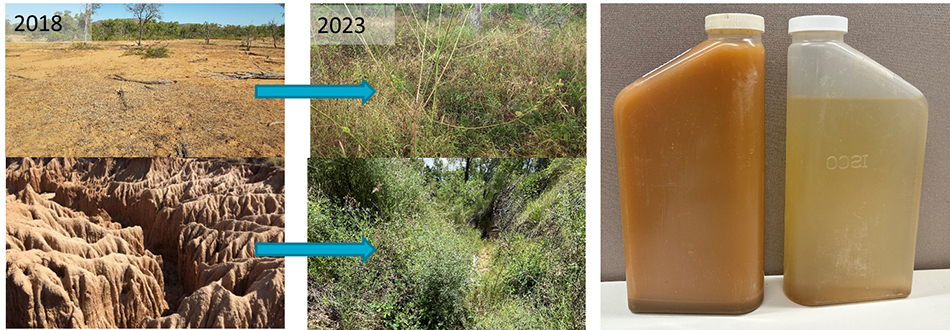
Mt Wickham changes between 2018 and 2023.
(Click on the report to download a PDF copy).

